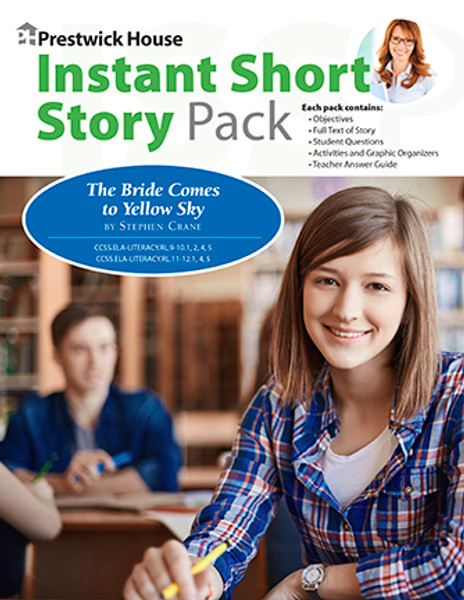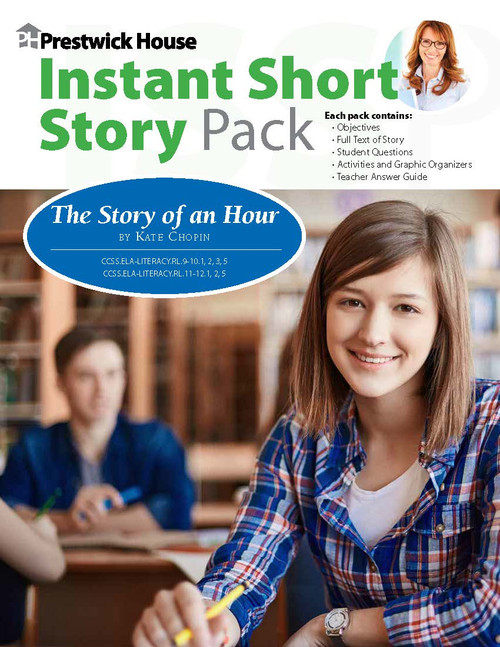Product Overview
Instant Resources for The Bride Comes to Yellow Sky by Stephen Crane
Whether you're looking for a short story to pair with the novel you're teaching, or you need a 2- to 3-day sub plan to use with the stories in your textbooks, Prestwick House Instant Short Story Packs go beyond basic comprehension to help students learn how to analyze literature.
Each downloadable pack addresses key skills through 5-10 standards-based analysis questions by guiding students through a series of scaffolding graphic organizers and in-class activities.
This Instant Short Story Pack for The Bride Comes to Yellow Sky by Stephen Crane includes:
- Scaffolding graphic organizers and in-class activities
- Standards-based objectives
- Introduction and pre-reading notes
- Complete short story text
- Rigorous analysis questions
- Detailed teacher's answer guide
About The Bride Comes to Yellow Sky
One of the most common mistakes made is taking the literature taught in school too seriously. Stephen Crane was something of a social rebel, but he had a sense of humor. By the time he made his first trip west, the states of Missouri, Nebraska, and Texas were a great deal tamer than the Wild West stories he’d heard as a child had led him to believe. The difference between what he expected and what he found is the basis for the humor in this story about a sheriff, his new bride, and the gun-happy town drunk who simply cannot understand the ways his world is changing.
“The Bride Comes to Yellow Sky” was written in 1898 while Crane was living in England. Although it has emerged as one of Crane’s well-known stories, it represents something of a departure from the main body of his work. The story is a parody. It might be said to depict the reality of the American West as contrasted with the common misconception of the Wild West, but it relies on clichés and stereotypes to communicate that reality.
To tell his story, Crane also uses a few techniques that were brand new at the time, especially his use of parallel time. As you read, notice how cleverly Crane allows the reader to realize that certain events are happening in different settings but at the same time. Today, it is a common storytelling technique in television programs and films, as well as in literature.
Of course, we need to examine things like the structure of the story, Crane’s use of color and other sensory details, word choice, and so on. But do not let your attention to these elements distract you from the simple fun of the story. After all, that is what made it popular in the first place.












